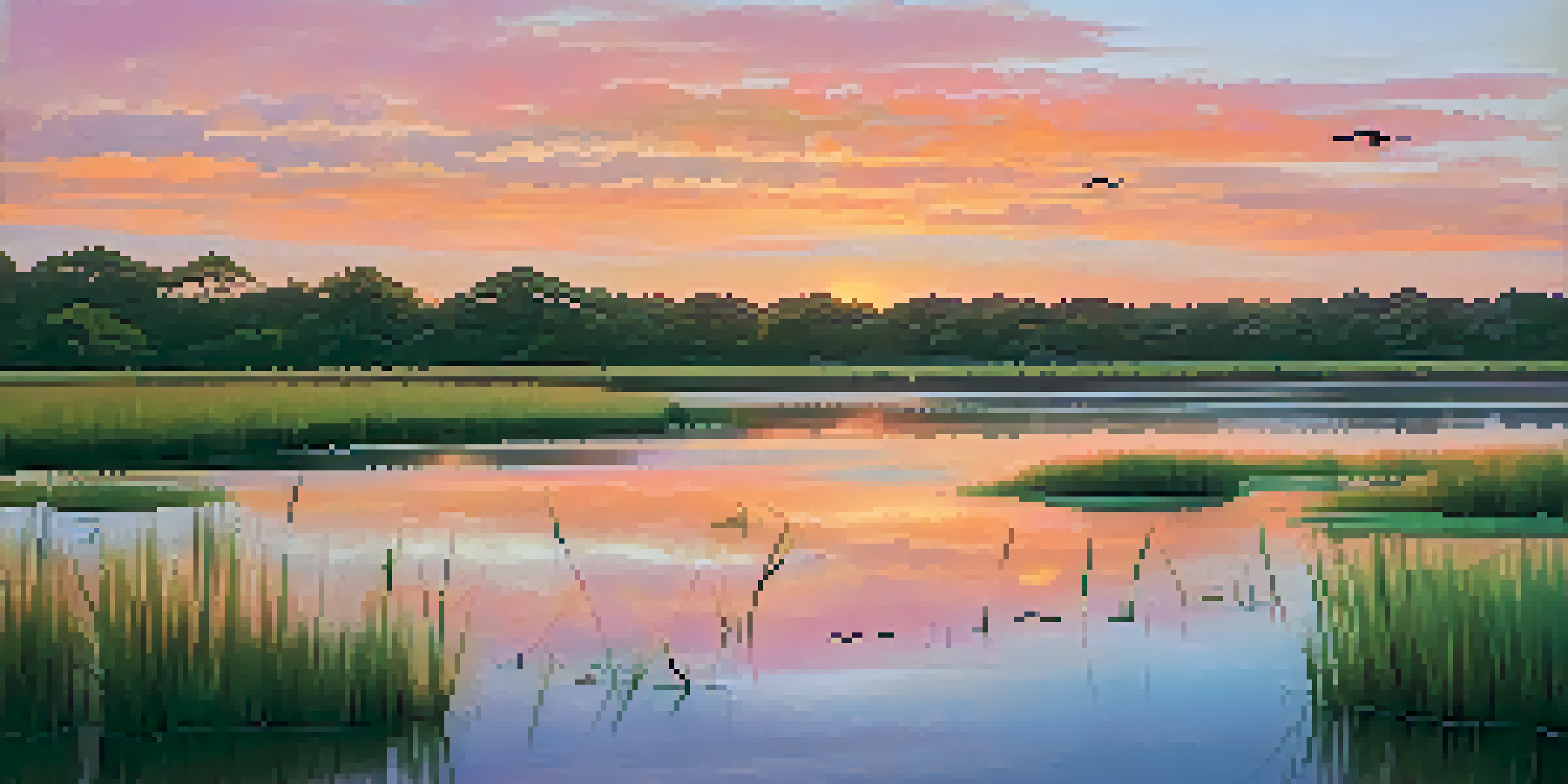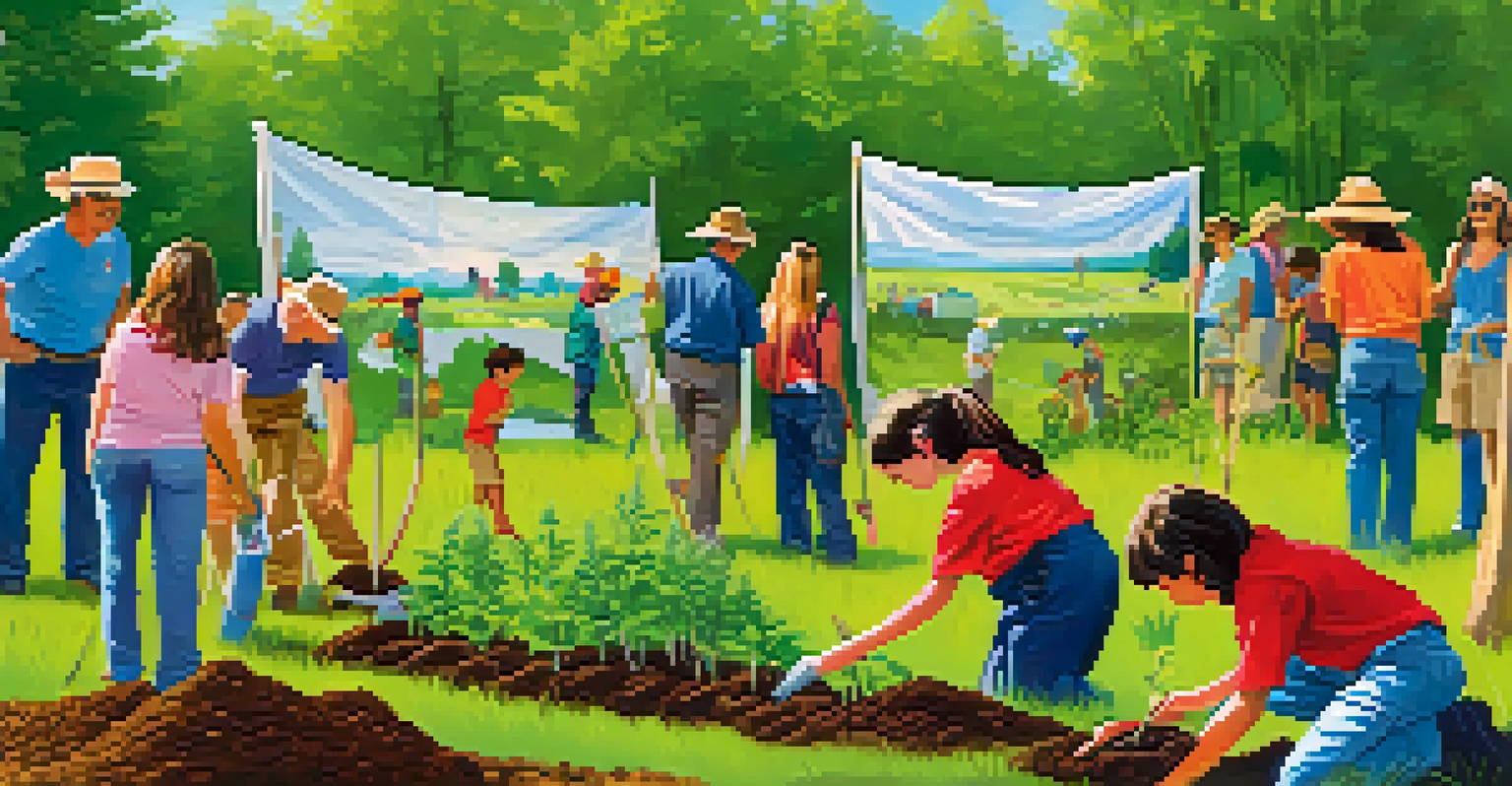Success Stories: Effective Conservation Projects in Georgia

The Importance of Conservation in Georgia's Ecosystems
Georgia is home to diverse ecosystems, from coastal marshes to mountains. These areas not only support wildlife but also provide essential services like clean water and air. Conservation efforts are crucial to preserving these habitats for future generations, ensuring that the rich biodiversity thrives.
The environment is where we all meet; where we all have a mutual interest; it is the one thing all of us share.
In recent years, awareness has grown around the impact of human activities on these ecosystems. Factors like urban development, pollution, and climate change pose significant threats. By actively engaging in conservation projects, communities can protect natural resources and promote sustainability.
Successful conservation is not just about saving the environment; it's about fostering a connection between people and nature. When communities understand the value of their local ecosystems, they are more likely to participate in and support conservation efforts.
The Georgia Land Conservation Program: A Model of Success
The Georgia Land Conservation Program (GLCP) has been a beacon of hope for preserving the state's natural landscapes. By providing funding and resources for land protection, the GLCP has successfully conserved thousands of acres of critical habitats. This program highlights how government initiatives can lead to meaningful environmental change.

One notable success is the preservation of the Oconee National Forest, which offers recreational opportunities and protects wildlife habitats. The GLCP's collaborative approach, involving local governments and non-profits, demonstrates the power of partnership in achieving conservation goals.
Community Involvement Drives Conservation
Engaging local communities in conservation efforts fosters a sense of stewardship and enhances the effectiveness of environmental projects.
The GLCP serves as a model for other states, showing that with the right resources and commitment, significant strides can be made in land conservation. Its success is a testament to the importance of long-term planning and community involvement.
Restoration of Georgia’s Coastal Marshes: A Community Effort
Coastal marshes in Georgia are vital for maintaining biodiversity and protecting shorelines. However, they have faced challenges from pollution and development. Community-led restoration projects have emerged as effective ways to revitalize these critical areas, showcasing the power of grassroots action.
In nature's economy, the cost of living is the price of life.
Organizations like the Georgia Conservancy have spearheaded initiatives to restore marshland habitats, using techniques like replanting native vegetation and controlling invasive species. These efforts not only improve the ecosystem but also provide educational opportunities for local residents.
The success of these projects hinges on community involvement. When residents take an active role in preserving their natural surroundings, they foster a sense of stewardship that benefits both the environment and the community.
The Role of Technology in Conservation Efforts
Technology has become an invaluable tool in conservation projects across Georgia. From drone surveillance for monitoring wildlife to GIS mapping for tracking environmental changes, innovative solutions are enhancing traditional conservation methods. This integration of technology allows for more effective and efficient conservation strategies.
One example is the use of remote sensing to monitor forest health and detect illegal logging activities. This real-time data collection enables quicker response times and helps ensure that conservation efforts are targeted where they are most needed.
Technology Enhances Conservation Efforts
The integration of innovative technologies, such as drone surveillance and GIS mapping, is revolutionizing conservation strategies in Georgia.
By embracing technology, conservationists in Georgia are not only improving their methods but also engaging a tech-savvy younger generation. This shift encourages innovative thinking and collaboration, vital for addressing the complex challenges facing our ecosystems.
Community Education: The Heart of Conservation Success
Education plays a pivotal role in the success of conservation projects in Georgia. By teaching communities about the importance of local ecosystems, organizations can inspire individuals to take action. Workshops, school programs, and community events help raise awareness about environmental issues.
Programs like the Georgia Audubon Society's educational initiatives focus on engaging youth in conservation efforts. By fostering a love for nature at a young age, these programs cultivate future environmental stewards who are equipped to tackle conservation challenges.
When communities are educated about their natural surroundings, they are more likely to support conservation initiatives. This community-driven approach creates a ripple effect, leading to greater involvement and advocacy for sustainable practices.
Success in Protecting Georgia's Endangered Species
Georgia is home to several endangered species that are critical to the state's biodiversity. Conservation projects aimed at protecting these species have seen remarkable success, thanks in large part to collaborative efforts among state agencies, non-profits, and local communities. A prime example is the recovery of the Eastern Indigo Snake, which faced severe population declines.
Through habitat restoration and public awareness campaigns, these efforts have led to increased populations of the Eastern Indigo Snake and other endangered species. Such success stories highlight the importance of targeted conservation strategies that address specific threats to wildlife.
Collaborative Partnerships Yield Success
Partnerships among government agencies, non-profits, and local communities create a powerful network that amplifies conservation outcomes.
Protecting endangered species not only helps maintain ecological balance but also enhances the overall health of ecosystems. By prioritizing these efforts, Georgia is taking significant strides toward a sustainable future.
Innovative Partnerships: Collaborations Driving Conservation
Partnerships between various stakeholders are crucial in advancing conservation efforts in Georgia. Collaborations between government agencies, non-profits, and local communities create a powerful network of resources and expertise. These innovative partnerships can tackle complex environmental issues more effectively than any single entity could alone.
For instance, the partnership between the Georgia Department of Natural Resources and local conservation groups has resulted in successful wildlife management programs. By pooling resources and knowledge, these collaborations have led to improved habitat conservation and restoration efforts.

Such partnerships not only enhance conservation outcomes but also foster a sense of community ownership and shared responsibility. When everyone works together, the impact of conservation projects is magnified, creating lasting change.
Celebrating Conservation Success: A Call to Action
As we reflect on the successful conservation projects in Georgia, it's essential to celebrate these achievements. Acknowledging the hard work and dedication of individuals and organizations inspires continued efforts and builds momentum for future initiatives. Success stories serve as powerful reminders of what can be accomplished when communities come together.
However, the work is far from over. Ongoing challenges such as climate change and habitat loss require sustained commitment and innovative solutions. Each of us has a role to play in conservation, whether through advocacy, education, or simply being mindful of our environmental impact.
By sharing these success stories, we can motivate others to get involved and support conservation efforts. Together, we can ensure that Georgia's natural beauty and biodiversity are preserved for generations to come.